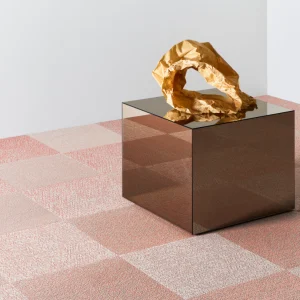
When Helvetica, a documentary about the ubiquitous and famously functional typeface, was released in 2007, it gained more mainstream success than anyone expected. While it was never going to challenge Spiderman III for box office receipts, the film has been shown at film festivals around the world, won rave reviews – particularly from graphic designers – and gained repeated television showings in America. In the UK it was adapted for Alan Yentob’s arts programme Imagine on BBC1.
The New York Times praised the film’s director, Gary Hustwit, for his ‘knack for finding a universe within a narrow topic,’ while London’s Time Out described it as ‘one of the wittiest, most diligently researched, slyly intelligent and quietly captivating documentaries of the year’ Perhaps the most surprised by its success was Hustwit himself, who at the time was a 42-year-old, first-time director from California with no formal training in either film-making or design. He describes himself as ‘still learning the language of film’, and yet the film demonstrated audacity in his selection of such an apparently mundane subject matter, and displayed a skilful confidence in its film-making. Helvetica was low-budget – Hustwit puts it as in the ‘low six figures’ – but expertly made; the recurring shots of Helvetica on posters, billboards and T-shirts created a distinctive rhythm and gave respite from the talking-heads interviews with graphic designers. The film was edited by Shelby Siegel who worked as assistant editor on Ang Lee’s Brokeback Mountain and has now been swept up by Hollywood. The director of photography Luke Geissbuhler worked on Sacha Baron Cohen’s Borat movie. Helvetica is about more than the eponymous font: it tells a brief history of typography and in doing so touches on the important ideological rifts in 20th-century design.

Yet the film also has a lightness of touch that never loses sight of the endearing irony in making a movie about a typeface. Almost all the participants seem aware that this isn’t life or death and have fun theorising. Paula Scher blames Helvetica for starting the Vietnam War, while Erik Spiekermann compares his love of fonts to another man’s fondness for women’s bottoms. This good-humoured playfulness from the contributors makes the film accessible to non-professionals and a joy to those in the know.
Though not an experienced film-maker, Hustwit’s acuity in catering for a niche audience comes from his background in independent music and book publishing. He worked with punk label SST Records in the late-1980s, ran the independent book publishing house Incommunicado Press during the 1990s, and for a brief period was vice president of the media website Salon.com in 2000. Never especially academic – he was twice expelled from San Diego University for failing to concentrate on his business course – he has been restless in his pursuit of creative outlets. In the late-1990s Hustwit became aware of the potential of digital format, easily mass-produced DVDs for independent film-makers. ‘I don’t know if it was something to do with the picture quality or the format itself but I suddenly went mad, obsessively buying DVDs,’ he says.Read more…
He quickly became frustrated by the dominance of standard, studio-produced films. ‘I just thought it would be interesting to have a kind of indie record label for film and release all these quirky documentaries, that I like to watch,’ says Hustwit. He set up Plexi Films in 2001 for this very purpose and it is from its small office in Brooklyn, New York that he works on the editing of his films. After its founding, Plexi almost immediately scored a big success with a documentary made by Sam Jones that charted the decline of American rock band Wilco. Plexi does release films about other art forms, but music documentaries remain the backbone of its catalogue.
While music is his first love, design has always been one of Hustwit’s major concerns. When running Incommunicado, he started using typography and learning about the modern history of graphic design, even making his own fonts for use on book covers: ‘We were squarely in the grunge era of typography so I was making these fucked-up, photocopied letters and then scanning them back in and making fonts out of them.’ Most of these he gave away as freeware on the internet and, as a result he still sees them in use today. One of his early fonts has been used by the New York City sanitation department for their recycling campaign, while another was used for the posters of Terry Gilliam’s sci-fi fantasy film Twelve Monkeys.
Following the success of Helvetica, Hustwit’s interest in the subject has expanded, and he has now immersed himself in the world of industrial design for his new film Objectified, which will premier at the South by Southwest film festival in Austin, Texas this month. ‘It’s a look at the creativity at work behind everything from toothbrushes to tech gadgets. It’s about our relationship to mass-produced objects and, by extension, the people who design them.’ For the film he has interviewed a huge range of designers and commentators, including Dieter Rams, Jonathan Ive, Marc Newson, Paula Antonelli, and the Bouroullec brothers. For the past year he has explored furniture and product design, getting to understand the issues and the personalities involved. Where the leading figures of graphic design tend to be called giants and geniuses, he has now entered an industry where there are stars and celebrities. Halfway through our conversation his phone rings, but he doesn’t take the call. It was Karim Rashid.

Rather than using the narrow focus of an individual product – an equivalent of Helvetica – for Objectified, Hustwit is exploring the huge range of industrial design, from furniture and domestic fittings to electronic devices. Though he will touch on the subject of conspicuous consumption and limited-edition design, Hustwit seems more interested in the creative work behind mass-produced items, exploring the methods employed by 3D designers. Without a specific story to tell, it remains to be seen if it can recreate the mix of geeky obsession and humour that made Helvetica such a success.
In the course of making the two films, Hustwit has discovered some marked differences between the two professions: ‘I think the graphic designers have more of a sense of humour. They have more flexibility and more forgiveness in terms of production. Industrial designers are more like engineers in that way, they’re working with manufacturers and the tolerances are zero. There’s a difference in the creative process, and it breeds different personalities.’ Though he has considerably less background in furniture or product design than he did in graphics, Hustwit is no less admiring of the designers behind everyday items. ‘They’re expressing their creativity through all these different objects,’ he says. ‘Someone like Naoto Fukasawa, I think he’s a poet. It’s not that design has to be expensive or limited edition. Good design can be a simple vegetable peeler, it makes our lives that much better.’
Just like Helvetica, however, Objectified focuses on the individuals and the progress of ideas rather than on technicalities or the development of a profession. Hustwit never appears on camera and his questions are never heard, but it is clear from the responses that he asks direct, even simple questions that elicit honest answers. ‘Documentaries are not about answering questions or teaching people lessons. It’s about getting the audience to think about their relationship to the subject matter, not telling them what their relationship should be,’ he says.
Hustwit has the laid-back demeanour of an ex-surfer, but the focus and clarity of an entrepreneur. This mix of pop-culture sensibility and serious-minded curiosity clearly endears himself to the designers he shows on film. Michael Beirut, who was interviewed for Helvetica, praises the way that Hustwit managed to make graphic design seem ‘positively hip’ while also structuring the interviews ‘to create a perfect short course in post-war graphic design.’Meanwhile his production work with Plexi continues apace. The company, which also has an office in London, has put out more than 50 films in the last seven years, and Hustwit is currently overseeing the first authorized DVD release of Andy Warhol’s screen tests. The DVD includes 13 of Warhol’s classic screen tests, including Nico, Edie Sedgwick, Dennis Hopper, and Lou Reed, paired with new soundtracks. ‘Warhol made more than 500 of these four-minute screen test films, and I think they’re some of his most subtly brilliant work,’ he says.
The production of Helvetica and Objectified has, however, ignited a passion for film-making that he intends to pursue for the rest of his life. ‘I do have one other design film that I want to make,’ he says, although he is likely to broaden his subject and maybe one day move into fiction films. ‘I just hope there’ll be more documentaries about design made and released in cinemas. Real documentaries not just quickie television programmes,’ says Hustwit. ‘Because this is a conversation, I expect and hope that other film-makers will answer these films with their own ideas’





